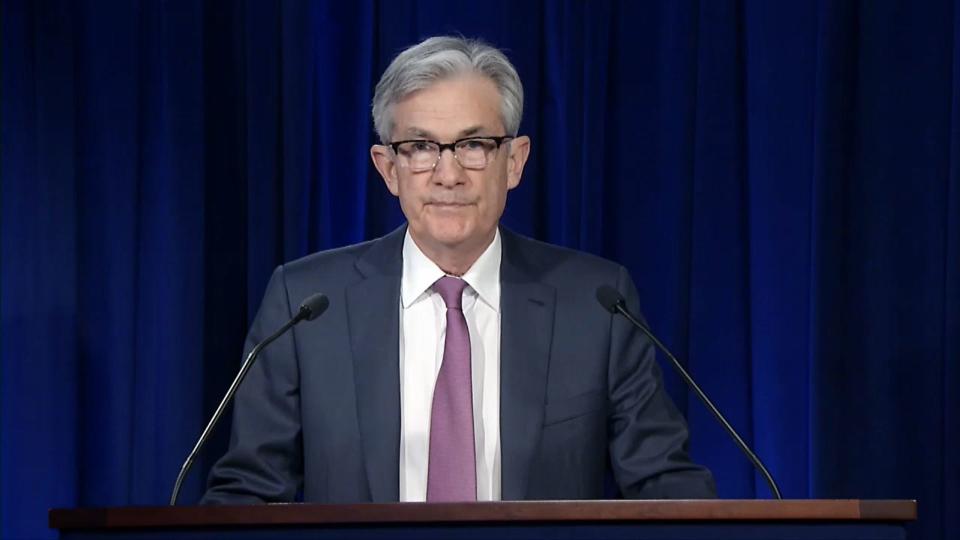El-Erian: Fed is tangled in a 'spaghetti bowl' of credit risk
The Federal Reserve is going to have a tough time unwinding the credit risk it’s absorbing amid the novel coronavirus, Allianz Chief Economic Adviser Mohamed El-Erian told Yahoo Finance in a new interview.
El-Erian told Yahoo Finance’s On the Move on Thursday that the central bank’s willingness to backstop the high-yield corporate debt market presents challenges to the Fed’s credibility and independence.
“We’re going to come out of this with a massive entanglement of both the Fed and the government in private sector activity,” El-Erian said, comparing the tie-up to a “spaghetti bowl.”
As businesses remain shuttered across the country, the Fed has opened up nine liquidity facilities in an effort to prevent a seizing up in markets ranging from U.S. Treasuries to municipal debt.

Two facilities in particular have caught attention for their novelty: the Primary Market Corporate Credit Facility and the Secondary Market Corporate Credit Facility.
The first facility would allow the Fed to directly purchase investment grade debt through a special purpose vehicle opened in conjunction with the U.S. Treasury. The scope of the facility was expanded to also cover “fallen angel” debt, assuming the issuer was downgraded below investment grade after March 22.
The second facility would take on bonds in the secondary market, including some U.S. high-yield corporate bonds.
Both facilities have yet to be officially opened, but the Fed says the facilities can make up to $750 billion in funding available.
Fed: ‘That’s okay’
El-Erian says the facilities underscore the Fed’s shift toward monetary policy that more heavily prioritizes the credit channel. With rates already at near-zero and quantitative easing essentially uncapped, the Fed has had to rely on its powers as a lender of last resort.
“The fact that a central bank is willing to selectively go into high yield is revolutionary,” El-Erian said. “Remember, central banks are not supposed to take on credit and default risk.”
Fed Chairman Jerome Powell on Wednesday acknowledged that it is deploying unconventional tools in these unprecedented times.

“We are clearly moving into areas where there is more risk than there has been in the past, and that's okay,” Powell said. “I think that's what we're supposed to do.”
The Treasury is providing equity and credit protection to the Fed’s liquidity facilities, which in theory should be able to absorb any potential losses under the programs. The Coronavirus Aid, Relief, and Economic Security (CARES) Act appropriated $454 billion to the Fed and the Treasury for these programs.
Programs announced so far would use up less than half of that appropriation.
El-Erian said the Fed’s actions are designed at preventing liquidity problems from evolving into solvency problems, where capital is impaired permanently.
Broadly, El-Erian said the Fed could avoid damage to its credibility and independence if fiscal policymakers can step up with more aggressive measures to support Main Street businesses through the crisis.
“I still think that we’re going to have the worst recession since the Great Depression,” El-Erian said. “It will make 2008-2009 look like a flesh wound.”
Brian Cheung is a reporter covering the Fed, economics, and banking for Yahoo Finance. You can follow him on Twitter @bcheungz.
Fed commits to near-zero rates as US economy sees 'sharp declines'
Cafe chain Cosi sues SBA for excluding bankrupt companies from emergency loans
FOMC Preview: Powell to face 'status check' on Fed's emergency actions
A glossary of the Federal Reserve's full arsenal of 'bazookas'
Read the latest financial and business news from Yahoo Finance
Follow Yahoo Finance on Twitter, Facebook, Instagram, Flipboard, SmartNews, LinkedIn, YouTube, and reddit.

